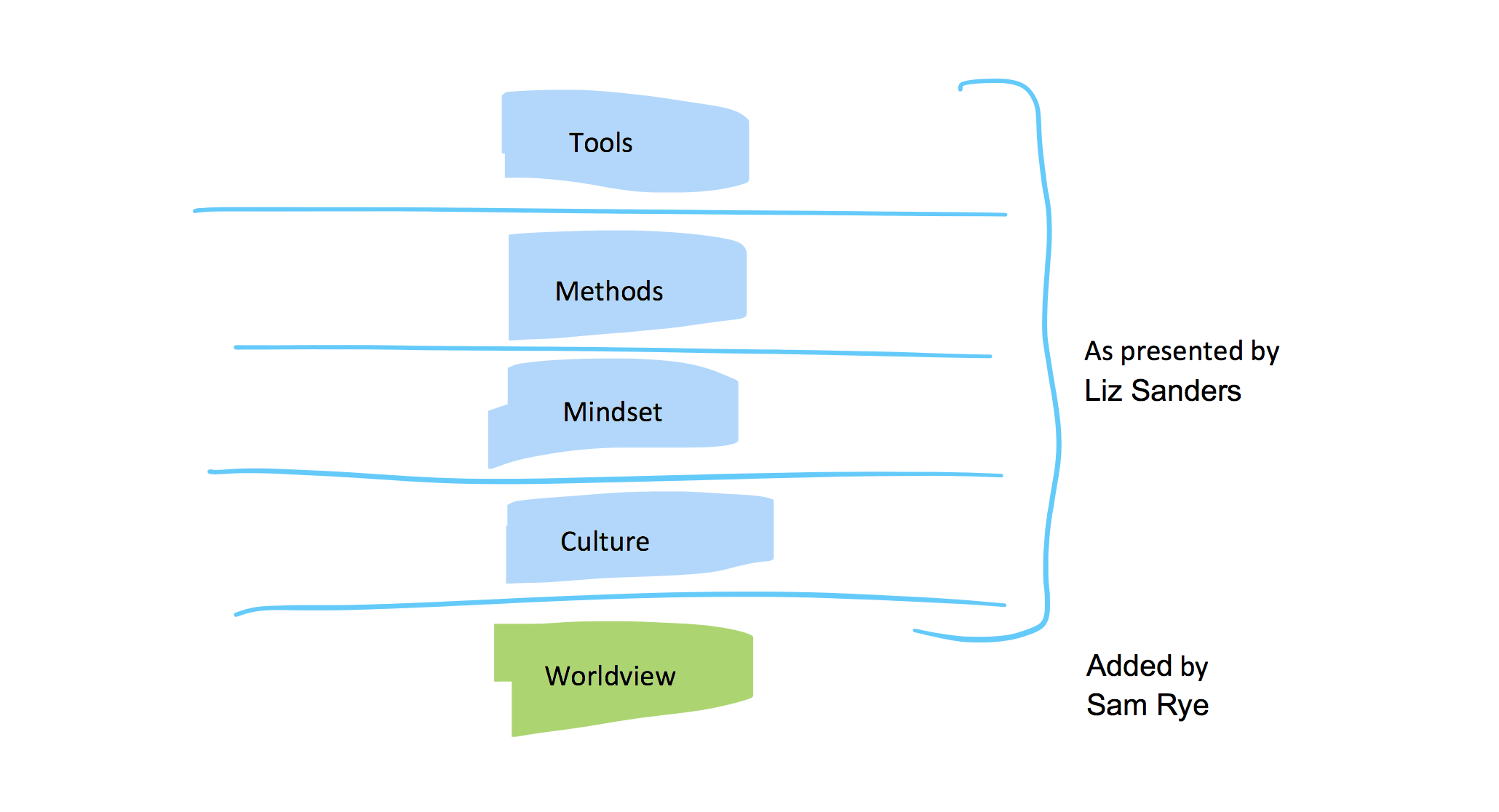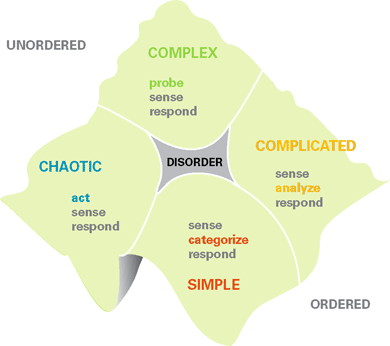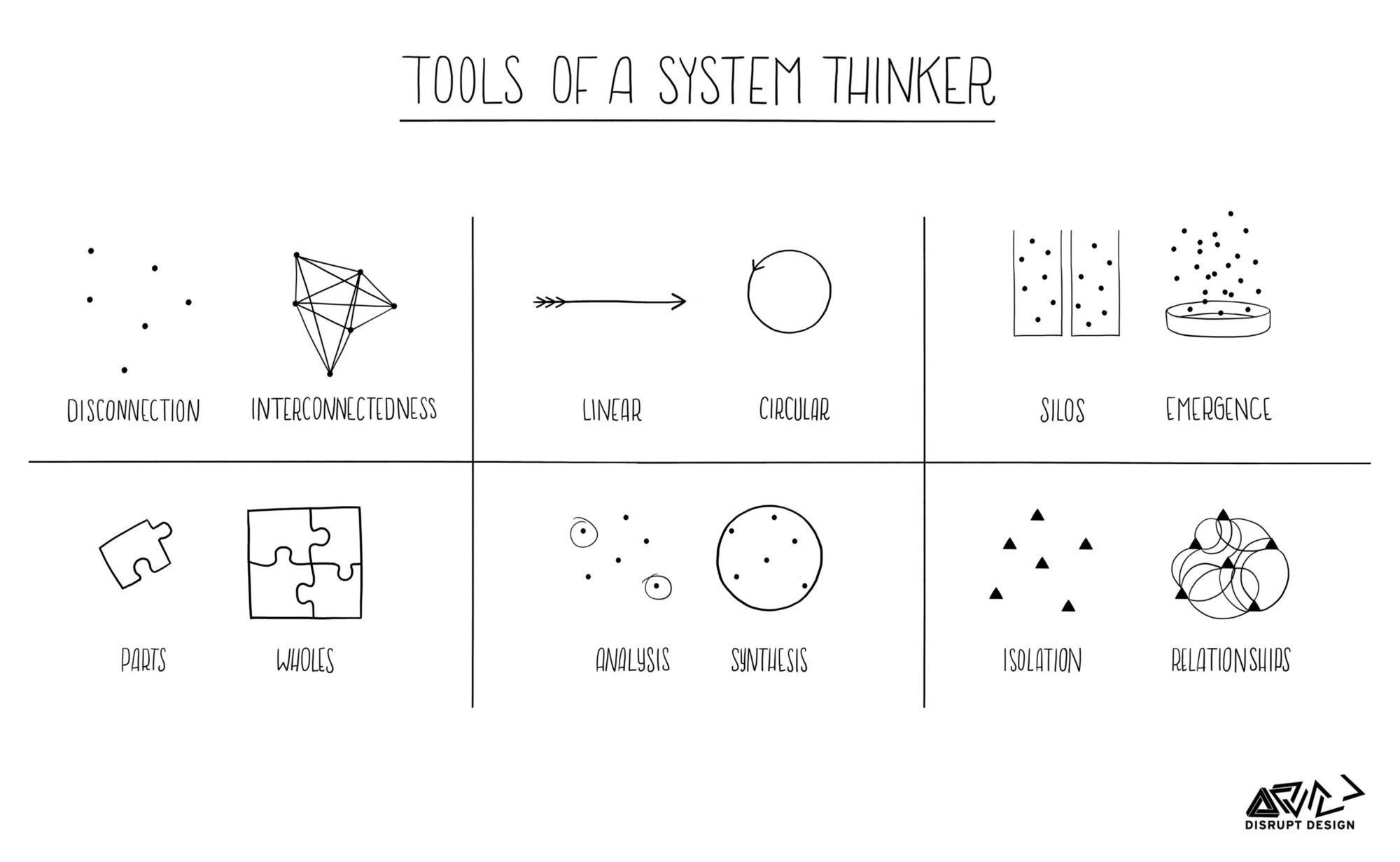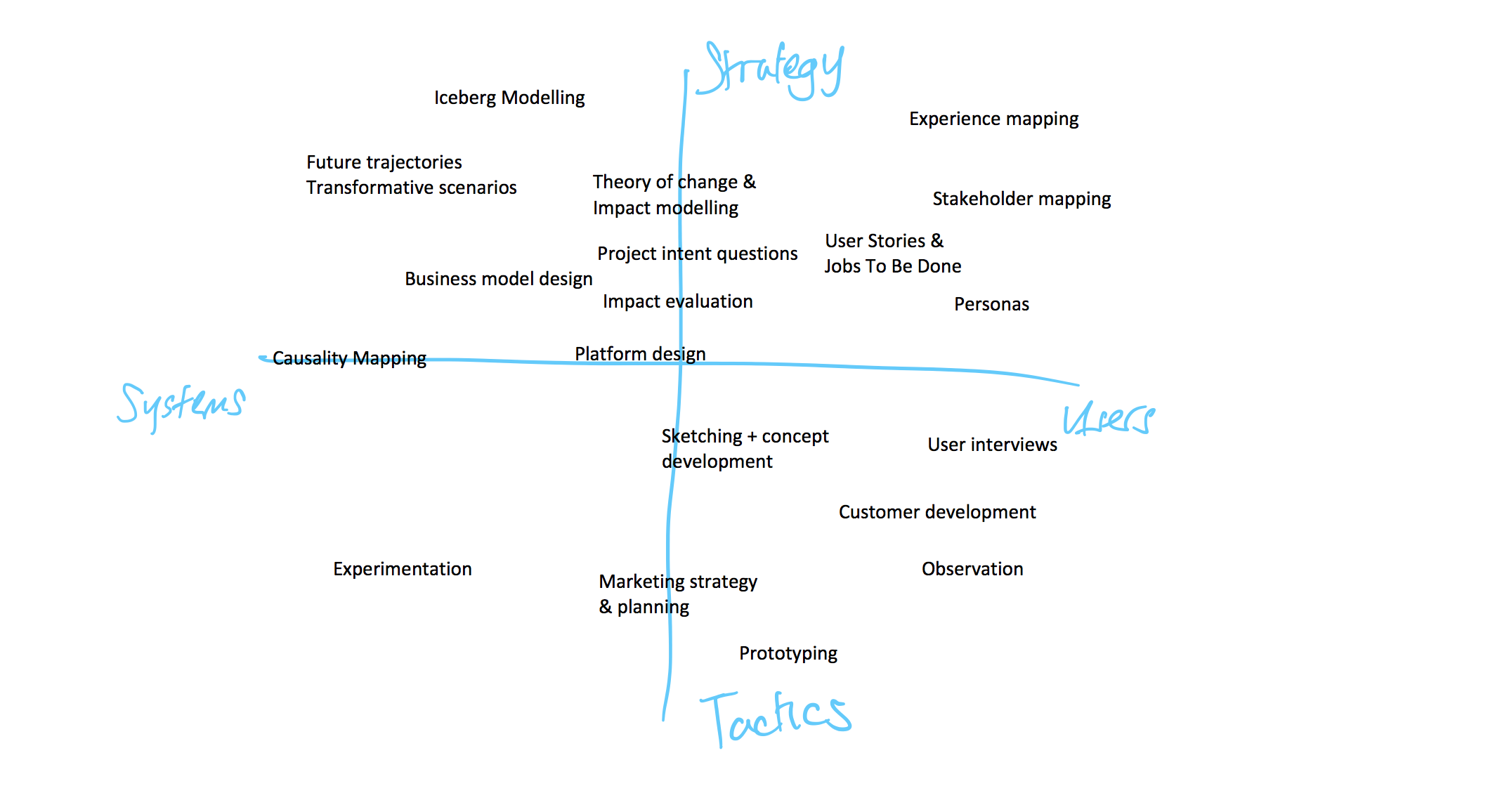What is Strategic Design practice?

Strategic Design practice is made up of a wide range of activities, methods and tools, and is much less well articulated than the likes of Service Design.
This post draws on my original post from my Masters research project, which used Systemic & Strategic Design practice to explore how to improve the social and environmental outcomes of environmental conservation projects. It is a replication in part of the (too) long piece I wrote in 2018 entitled 'Design As Strategy?'.
This article explores the specifics of Strategic Design practice, and I plan to write an additional post soon about Systemic Design practice to complement it - subscribe above/below to get that.
On Strategy
I don't want to write a significant re-hash of various other pieces I've written about what Strategy is and isn't, but if you're interested to dive deeper, I definitely suggest reading 'Design as Strategy?'.
My main premise is that when working in complexity, strategy is less about knowing the exact path to take to achieve your goals, and more like wayfinding your way to one of many possible destinations.
Essentially I use Rumelt's description of strategy:
“Good strategy is coherent action backed up by an argument, an effective mixture of thought and action"
In addition, I highly suggest reading Jean Boulton's work on strategy and action when working in complexity:
"Embracing complexity can actually makes things easier, simpler, and more straightforward! How much time gets spent by organizations making cases, forming detailed plans, completing analyses, and demonstrating outcomes? How much of this really gets to the heart of the situation and really determines either what to do or what has been done? Perhaps less planning but more experimentation would be not only more effective but also simpler?"
On Mindset
Practice stems from the mindset and oncology which we inhabit and act from.
If we recognise fourth order design as focusing on complex systems, we should pay attention to the shifts designers may need to make in our worldview, in order to be effective designers.

This diagram was introduced to me by Liz Sanders (Assoc Prof at Ohio State University), as a way of understanding how our Design practice is rooted in our culture [13]. I added ‘worldview’ below culture, as a deeper layer which drives our culture. Understanding things this way, we see that (some of) our existing methods and techniques developed in other orders of design may be inadequate for the reality of design work in fourth order.

Snowden offers us a sensemaking matrix, The Cynefin Framework. Beneath this framework (which helps people analyse the domain they are operating in), is the nuanced understanding of leadership and decision making which is appropriate; in short, it’s about appropriate strategy and mindset.
“Most situations and decisions in organizations are complex because some major change — a bad quarter, a shift in management, a merger or acquisition — introduces unpredictability and flux. In this domain, we can understand why things happen only in retrospect. Instructive patterns, however, can emerge if the leader conducts experiments that are safe to fail. That is why, instead of attempting to impose a course of action, leaders must patiently allow the path forward to reveal itself. They need to probe first, then sense, and then respond.”
— Dave Snowden, “A Leader’s Framework for Decision Making” [14]
Looking at mindsets which allow people to work and thrive in complexity, Leyla Acaroglu introduces some concepts in ‘Tools of a Systems Thinker’ which all revolve a similar mindset — recognising and embracing interconnectedness. [15]

If we pair Sanders’ conceptualisation of the layers of design practice with Snowden’s overview of complexity science, and Acaroglu’s introduction of core concepts for systems thinking, we start to build a picture of the Mindset which designers working in the fourth order much inhabit.
On Activities
In an effort to explore what some bright minds thought about the practice, I kicked off a twitter thread. This lead to some interesting perspectives from a range of practitioners around the world. You can see the thread here:
Interested in your favoured perspectives or definitions of Strategic Design.
— Sam Rye (@sam__rye) July 17, 2018
Any offerings @johnthackara @jacwex @indy_johar @Kumeugirl @suhitanantula @emmablomkamp?
Perhaps my favourite was from John Thackara (Author and Designer at the intersection of social-ecological systems).
a) my perspective is that strategic design = design with purpose. Which all design is, except pointless design.
— john thackara 约翰·萨卡拉. (@johnthackara) July 17, 2018
b) definitions, by my definition, are what people do, who would otherwise busy themselves with pointless design.
I hope that helps.
The pragmatism of seeing Strategic Design simply as ‘what people do when they’re designing with purpose’, speaks to me. From my perspective, the value of defining a sub-discipline is largely to help people see themselves, to articulate why their work is important to them and others, and to solve common challenges one may face.
So, what do people do?
I thought I would broach this by sharing some of the activities I see when actively working on a project through a strategic design lens.

I mapped some of these onto a matrix to gain a little more insight about my own practice, and where the types of activities I tend to use, lie on the spectrums of Strategic-Tactical, and Systems-User-centered. I recognise that individual people are living systems (thus the spectrum isn’t literal), however I used more of a societal / ecological lens in this case. This raft of activities is by no means exhaustive — as John Thackara suggests, (strategic) designers will use whatever activities they need to build context, clarity and direction.
The main difference I observe between Design-centric activities and other disciplines which may operate in the fourth order or strategic realm, is the focus on making to understand (synthesis) instead of analysis-centric approaches.
Speaking of other actors in this realm, it is important to acknowledge a huge amount of work that has also been contributed by disciplines such as Social Sciences, Complexity Science, Facilitation and Social Process, Sustainability & Environmental Science, Futures, Movement Building, Collective Action.
Insights & Critique
What have we learned from all of this landscape exploration?
Insights
- Orders are permeable. It’s not really plausible to solely operate in the strategic end. Whilst there’s a lifetime of skills to acquire and evolve in strategy alone, truly successful design work will only come from understanding the entire process of value creation. Moving through the different orders, as necessary (and/or pulling in collaborators to help shine a light on blind spots), will create better outcomes.
- Activating the fuzzy front end. Whatever your definition, elevating Design to the strategic plane is really about allying creative approaches (typically associated with design) with the early stages of problem identification and framing, and enabling it to flow throughout the lifetime of the initiative.
- Mindset for thriving in complexity. I see an important pattern in recognising the types of mindsets and approaches which are best suited to the complexity inherent in fourth order design and strategic design practice. The key to me with this is firstly about the shift to a real understanding and familiarity with complex systems (characterised by interconnection and emergence), but also about why the types of thinking and sensemaking which are endemic to design — abductive thinking and synthesis — are so well suited to working in complexity.[16]
Critique
- Understanding Strategy. There is much misconception about what strategy actually is, and what denotes good strategy. Designers must go beyond integrative thinking and fully understand (good) strategy formation and action.
- Implications of acting in the fourth order. There are profound implications of acting at the fourth order of design, as the potential to shape society and ecology is significant. Some of the initial implications which come to mind, are about who is involved in the design work, what ethical standards are being applied, and how unintended consequences are addressed. Understanding the characteristics of complexity, and how our work as designers can operate within that context is important, as traditional planning-centric mindsets of linear cause-and-effect, are no longer relevant in the fourth order. Instead we must embrace a prototyping mindset and culture which offers better likelihood of success [17].
- Integrating Nature’s “voice”. Much of the strategic design practice I’ve seen talked about or highlighted in case studies, is a fierce proponent of human centered design. Yet all too often, our anthropocentric world doesn’t offer the best soil from which to grow truly sustainable solutions for our planet (see ethical implications, above). There’s a need for the strategic design field to investigate and share good practice when it comes to integrating all of nature as a stakeholder in our processes. If you’re interested in this, there’s an event series happening in August 2018 in Melbourne aimed at service designers.
Acknowledgements
A huge thank you to all the voices who chimed in on the twitter thread, including john thackara, Emma Blomkamp, Lee Ryan, Chris Jackson, Suhit Anantula, Alastair Somerville, Marc Rettig, Sophie Dennis, cameron tonkinwise, and anyone else I missed!
Also to inspiration from Indy Johar, Imandeep Kaur, Adam Groves, Tessy Britton, Liz Sanders, Andrea Siodmok, Lorna Prescott & Jo Orchard-Webb, amongst a wide field of others.
References
[1] Sanders, E. B.-N., & Stappers, P. J. (2012). Convivial toolbox : generative research for the front end of design. BIS. Retrieved fromhttp://www.bispublishers.com/convivial-design-toolbox.html
[2] Buchanan, R. (1992). Wicked Problems in Design Thinking. Design Issues, 8(2), 7–35. https://doi.org/10.2307/1511637
[3] Leurs, B., Roberts, I. (2017). What do we mean by design?. Nesta. Retrieved from https://www.nesta.org.uk/blog/what-do-we-mean-by-design/
[4] Golsby-Smith, T. (1996). Fourth Order Design : A Practical Perspective. Design Issues, 12(1), 5–25. Retrieved from https://www-jstor-org.ezproxy.massey.ac.nz/stable/pdf/1511742.pdf?refreqid=excelsior%3Aa73afb235eca91e89d4c6af5fa22a2e4
[5] Nylén, D., Holmström, J., & Lyytinen, K. (2014). Oscillating Between Four Orders of Design. Design Issues, 30(3), 53–65.https://doi.org/10.1162/DESI
[6] Rumelt, R. (2013). Good Strategy / Bad Strategy: the difference and why it matters. London: Profile Books Ltd. Retrieved from https://profilebooks.com/good-strategy-bad-strategy.html
[7] Mintzberg, H., & Waters, J. A. (1985). Of Strategies, Deliberate and Emergent. Strategic Management Journal, 6(3), 257–272. Retrieved from https://onlinelibrary.wiley.com/doi/abs/10.1002/smj.4250060306
[8] Helsinki Design Lab. (2018). What is strategic design? Retrieved fromhttp://www.helsinkidesignlab.org/pages/what-is-strategic-design
[9] Hill, D. (2014). Dark Matter and Trojan Horses: A Strategic Design Vocabulary. https://strelka.com/en/press/books/dark-matter-and-trojan-horses-a-strategic-design-vocabulary
[10] Mazo, D. (2016). What a strategic designer* does. Strategic Design Lab, (February 2014), 1–5. Retrieved from https://medium.com/strategic-design-lab/what-a-strategic-designer-does-b942f295379
[11] Irwin, T. (2015) Transition Design: A Proposal for a New Area of Design Practice, Study, and Research, Design and Culture, 7:2, 229–246, DOI: 10.1080/17547075.2015.1051829
[12] Manzini, E. (2015). Design, When Everybody Designs. (F. Ken & E. Stolterman, Eds.) (1st ed.). Cambridge: The MIT Press. Retrieved from https://mitpress.mit.edu/books/design-when-everybody-designs
[13] Sanders, L., & Stappers, P. J. (2012). Convivial design toolbox: generative research for the front end of design. BIS. Retrieved from http://www.bispublishers.com/convivial-design-toolbox.html
[14] Snowden, D. j., & Boone, M. E. (2007). A Leader’s Framework for Decision Making. Harvard Business Review, (November), 1–14. Retrieved from https://hbr.org/2007/11/a-leaders-framework-for-decision-making
[15] Acaroglu, L. (2017). Tools for Systems Thinkers: The 6 Fundamental Concepts of Systems Thinking. Disruptive Design, 1–8. Retrieved from https://medium.com/disruptive-design/tools-for-systems-thinkers-the-6-fundamental-concepts-of-systems-thinking-379cdac3dc6a
[16] Kolko, Jon (2010), “Abductive Thinking and Sensemaking: The Drivers of Design Synthesis”. In MIT’s Design Issues: Volume 26, Number 1 Winter 2010.
[17] Hassan, Z. (2015). The Rise of The Prototyping Paradigm. Social Kritik, 142, 1–13. Retrieved from http://www.socialkritik.dk/





